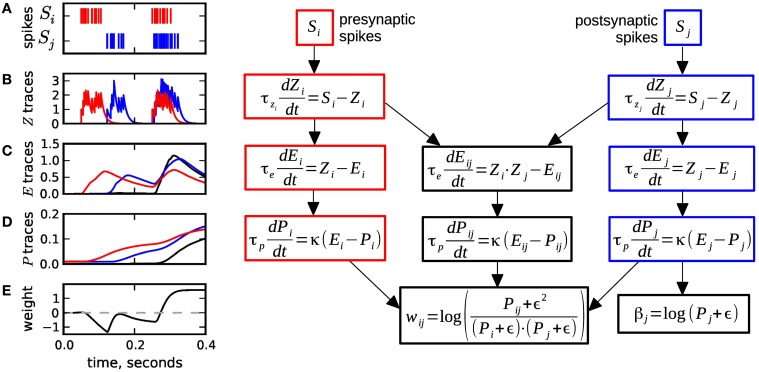Figure 1.
Equations and sample traces of the spike-based BCPNN learning rule. (A) Presynaptic (red) Si and postsynaptic (blue) Sj spike trains serve as input to a BCPNN synapse. (B) The input spike trains are low pass filtered into the Z traces with time constants τzi,τzj. (C) E traces compute the low-pass filter of Z traces with τe. The Eij variable (black) tracks coincident pre- and postsynaptic activity. (D) E traces are passed on to the P traces and low-pass filtered with τp. (E) The P traces are used to compute the postsynaptic bias βj and the synaptic weight wij, which can vary between positive and negative values. Usually, the dynamics get slower from B to D: τzi, τzj ≤ τe ≤ τp. Figure redrawn from Tully et al. (2014).

